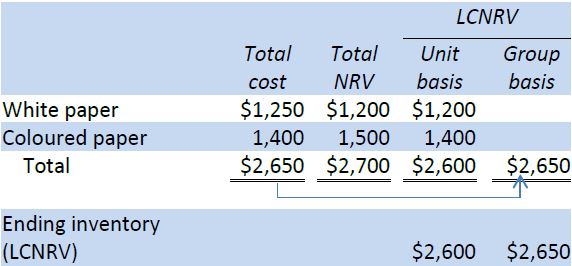Content

This ratio measures cash from operating activities as a percentage of the sales revenue in a given period. A positive margin indicates efficiency, profitability, and earnings quality.
An Accumulated Translation adjustment account is maintained, which stores the accumulated unrealized gains/losses on the principal as a contra-equity account on the balance sheet. When principal payments are made, the realized gain/loss is recognized in the income statement and the contra-equity account is adjusted appropriately. The remaining number of payments is calculated by determining https://business-accounting.net/ the amount of time remaining in the amortization term and dividing this term by the current payment frequency. The synchronization process depends on whether the pattern is relative or absolute. To synchronize a relative pattern, the cash flow engine calculates the payment dates for the instrument record by rolling the origination date forward by the pattern frequencies.
Step 4: Convert the Rearranged Balance Sheet Into a Cash Flow Statement
Therefore, the principal runoff equals the current payment amount. For transfer pricing of adjustable-rate instruments, data is reset to values consistent with the last reprice date. The next payment date is rolled back by the payment frequency to the first payment date after the last reprice date. The remaining number of payments is increased by the number of payments added in the rollback process. The different schedule amortization codes relay to the cash flow engine what type of payment is stored in the schedule table.
10 Tricks to Try in Online Casino to Make More Money – UrbanMatter
10 Tricks to Try in Online Casino to Make More Money.
Posted: Tue, 07 Feb 2023 15:44:23 GMT [source]
For market values, this method is used if the Mature At Reprice option is enabled in the Discount Rates interface. If this is the first payment made by a new business record, the payment amount is calculated using the original balance, original rate, and the original number of payments. The original number of payments is calculated by using the amortization term, as specified through the Maturity Mix Rule or Transaction Strategies Rule, and the original payment frequency. If an instrument reprices multiple times within a payment period, only the last repricing event affects the interest cash flow. Instruments with an amortization code of 802 do not reference the payment amount column in the schedule tables. These instruments are processed as interest-only records, with all principal, accept prepayments, running off on the maturity date. The indirect method, on the other hand, starts with the net income and adjusts the profit/loss by the effects of the transactions.
What is Cash Flow Analysis?
A more detailed cash flow analysis — provided through ERP and advanced accounting software — offers insights into the financial health and future performance of a business. Business owners, managers, and executives should look at similar data on their companies on a regular basis to ensure it’s on track to meet its short-term and long-term financial goals. With modern accounting and bookkeeping software, or an updated ERP, you can likely generate a statement of cash flows with just a few clicks. If you’re new to free cash flow analysis, here’s a template you may find helpful in calculating cash flow for your business.
- The content provided on accountingsuperpowers.com and accompanying courses is intended for educational and informational purposes only to help business owners understand general accounting issues.
- The figure below illustrates the a Framework of the major groupings using the Direct Method.
- The root cause of this problem most commonly resides in models being built with inconsistent and contradictory data sources.
- Randi’s a freelance graphic designer—she needs to calculate her free cash flow to see if hiring a virtual assistant for 10 hours a month is financially feasible.
To do a cash flow analysis, you’ll first need to prepare your operating, investing and financing cash flow statements. Two of the financial statements that businesses prepare as part of their monthly accounting cycle are the income statement and statement of cash flows. The income statement How to calculate cash flow: details of methods and techniques shows a firm’s profit or net income, while the statement of cash flows shows the firm’s cash position. You’ll need to understand cash flow if you’re operating a small business. Cash flow statements are one of the three fundamental financial statements financial leaders use.
Importance of Cash Flow Analysis
The example below includes seven categories based on the nature of the revenue and expenses. Used in conjunction with neg am limit to determine the maximum amount that instrument can negatively amortize. If this methodology is used and the reprice date falls mid-payment, an extra interest cash flow must be calculated. This interest cash flow represents the portion of the next interest cash flow that applies from the last payment date before the reprice date and the reprice date. The amortization of principal and payments of interest must reflect the effect of changes in the exchange rate.
The starting cash balance is necessary when leveraging the indirect method of calculating cash flow from operating activities. Discounted cash flow is a financial analysis method that computes forecasted cash flows for years in the future, using today’s lower value. The DCF formula uses a specific time period, the time value of money, and the risk with a selected discount rate. It can be calculated to assess the value of a company, potential projects, and the expected return from securities investments.
Let’s take a closer look at how to calculate operating cash flow. Cash flow analysis is the third tool of small business cash flow management. This technique involves examining the components of a business that affect its cash flow, such as accounts receivable, inventory, accounts payable, and credit facilities. The purpose of cash flow analysis is to identify cash flow problems that impact liquidity and solvency and to help find ways to improve cash flow. An amortization code of 800, 801, or 802 signals to the cash flow engine that this instrument record is a schedule record. To properly model schedule instruments, the cash flow engine must retrieve payment dates and payment amounts from the Schedule table. A match is made between the Identity Code, ID number, and Instrument type code from the instrument record to the same data in the Schedule table.
Per Standardized Approach specifications, the CPR would receive a scaling factor of .8 in the SA Parallel Up scenario, 1.2 in the SA Parallel Down scenario, and so forth. This means that this product-currency asset will receive this new CPR and the notional prepayments will reflect this adjustment. This principle is also applicable to liabilities subject to early redemption.
Show the operating activities section of the statement of cash flows for year 2 using the indirect method. Would a decrease in accounts payable be added to or deducted from net income to arrive at net cash flow provided by operating activities under the indirect method? This figure can give you a clear picture of how you’re doing financially on the core operations of your business.

